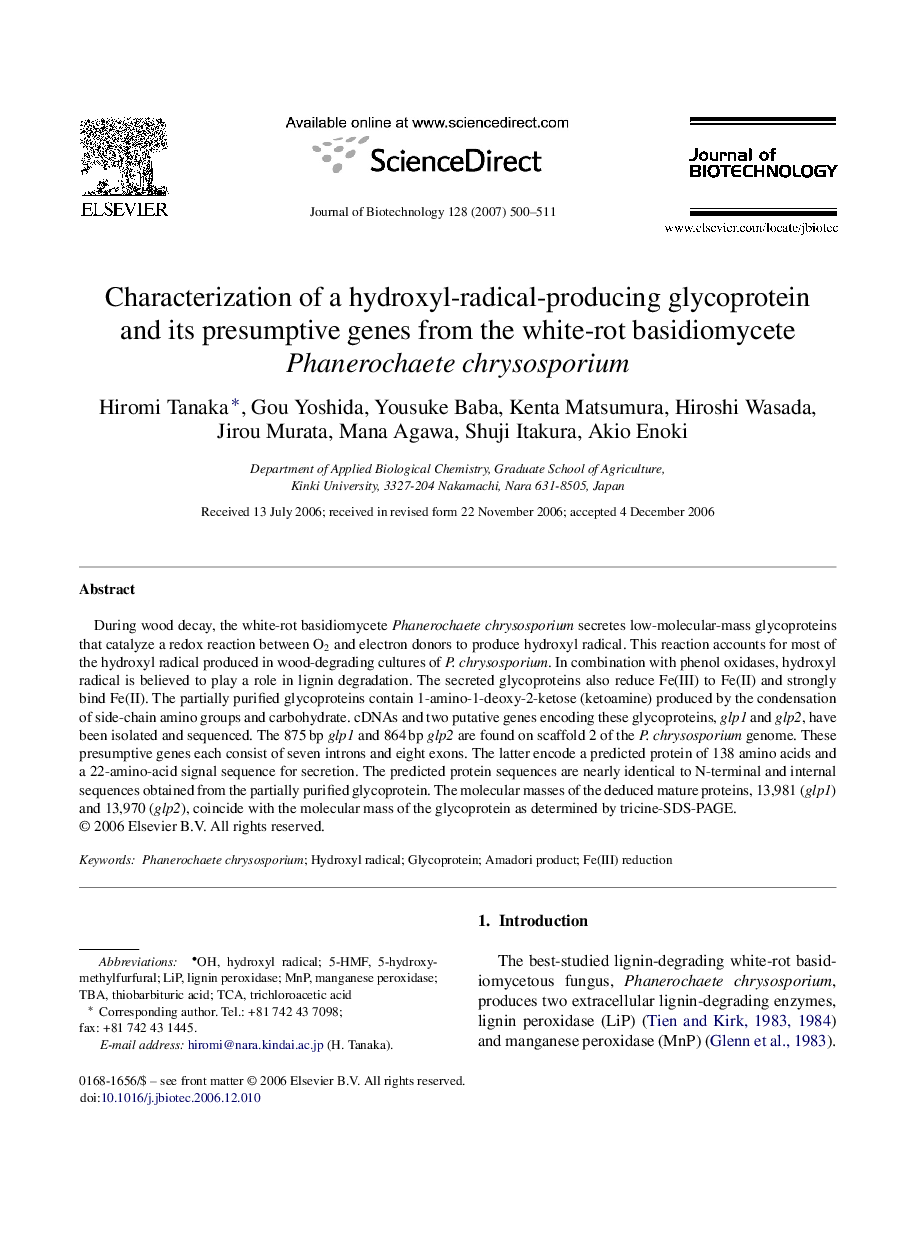| Article ID | Journal | Published Year | Pages | File Type |
|---|---|---|---|---|
| 25270 | Journal of Biotechnology | 2007 | 12 Pages |
During wood decay, the white-rot basidiomycete Phanerochaete chrysosporium secretes low-molecular-mass glycoproteins that catalyze a redox reaction between O2 and electron donors to produce hydroxyl radical. This reaction accounts for most of the hydroxyl radical produced in wood-degrading cultures of P. chrysosporium. In combination with phenol oxidases, hydroxyl radical is believed to play a role in lignin degradation. The secreted glycoproteins also reduce Fe(III) to Fe(II) and strongly bind Fe(II). The partially purified glycoproteins contain 1-amino-1-deoxy-2-ketose (ketoamine) produced by the condensation of side-chain amino groups and carbohydrate. cDNAs and two putative genes encoding these glycoproteins, glp1 and glp2, have been isolated and sequenced. The 875 bp glp1 and 864 bp glp2 are found on scaffold 2 of the P. chrysosporium genome. These presumptive genes each consist of seven introns and eight exons. The latter encode a predicted protein of 138 amino acids and a 22-amino-acid signal sequence for secretion. The predicted protein sequences are nearly identical to N-terminal and internal sequences obtained from the partially purified glycoprotein. The molecular masses of the deduced mature proteins, 13,981 (glp1) and 13,970 (glp2), coincide with the molecular mass of the glycoprotein as determined by tricine-SDS-PAGE.
